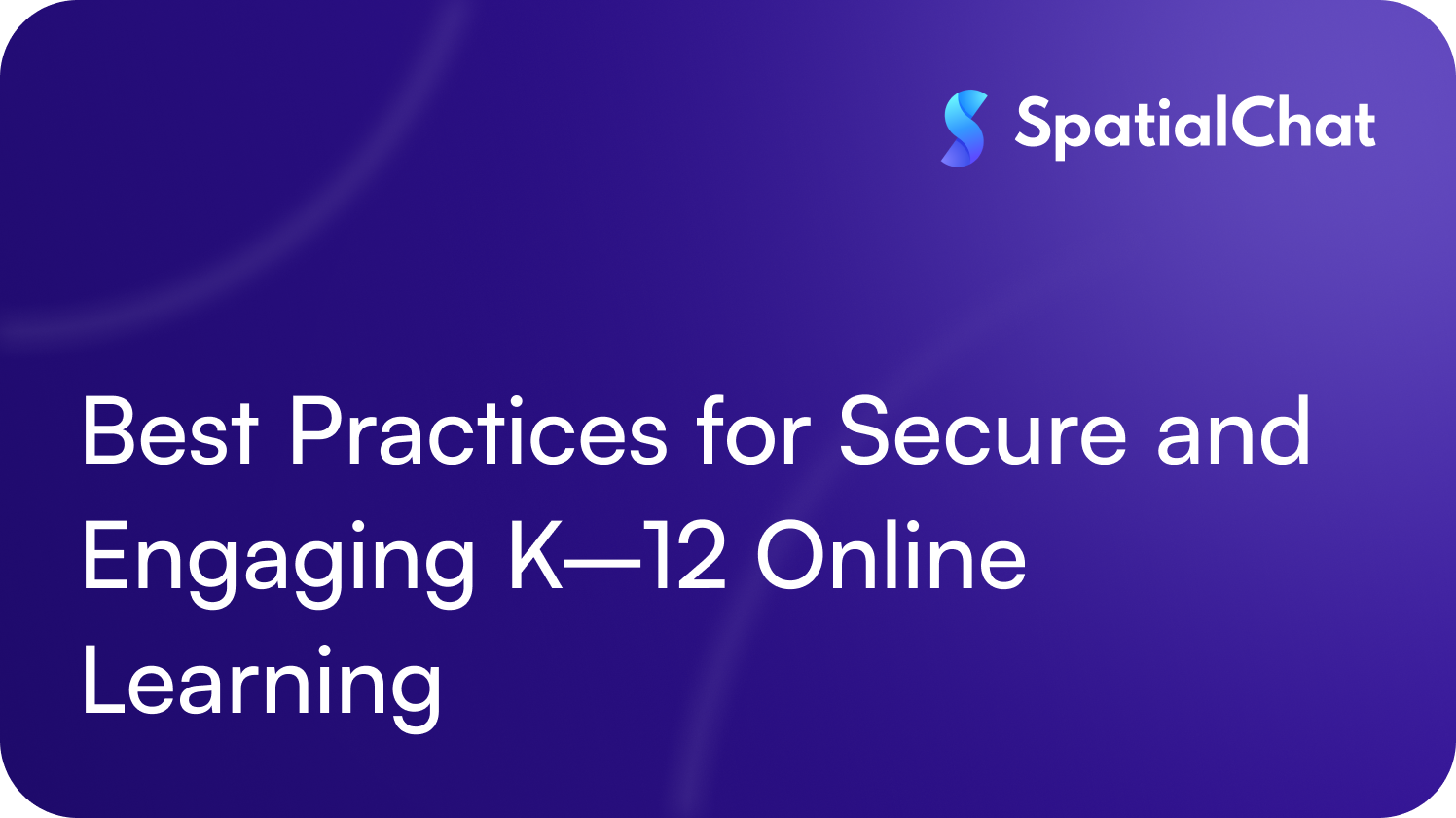As virtual learning becomes more embedded in K–12 education, it’s creating new pathways for students to access diverse resources and learning experiences far beyond the walls of a traditional classroom. But with this expansion comes a critical responsibility: ensuring that digital learning spaces remain safe, supportive, and secure.
School administrators and educators play a central role in meeting this challenge. By establishing clear best practices, they can safeguard students while fostering interactive and inclusive virtual classrooms. This guide explores key strategies K–12 educators can adopt to create enriching and protected online learning environments.
Why Safety Matters: Understanding the Risks of Online Learning
While online education offers flexibility and expanded access, it also introduces a range of risks that schools must proactively manage. Recognizing these risks is the first step toward building secure digital classrooms.
Here are three of the most pressing challenges K–12 educators should be prepared to address:
1. Data Protection and Student Privacy
Safeguarding student data is a top concern in any online learning environment. Without robust security measures, students' personal information can be compromised through data breaches, unauthorized access, or accidental sharing. To reduce these risks, administrators should implement secure login systems, keep access permissions up to date, and provide digital literacy education that helps students understand how to protect their privacy online.
2. Cyberbullying and Inappropriate Content
Nearly half of U.S. teens report experiencing online harassment, according to Pew Research Center. In virtual classrooms, chat tools, video calls, and discussion boards can unfortunately become channels for cyberbullying or exposure to harmful content. Setting clear expectations for online behavior, actively moderating discussions, and using content filters are all essential practices. Just as important is creating a culture where students feel safe speaking up about inappropriate behavior, and know that their concerns will be taken seriously.
3. Identity Verification and Secure Attendance
Maintaining classroom integrity means ensuring that only registered students have access to online sessions. Without proper verification, there’s a risk of unauthorized individuals joining, which can compromise both safety and learning quality. Educators should have consistent processes to verify student identities, track attendance, and compare participation against enrollment records. This helps maintain a secure, focused learning environment built for student success.
Using Technology Safeguards to Reduce Online Learning Risks
Understanding the risks of virtual learning is only the first step. The next is putting the right technology safeguards in place to address those challenges head-on. Here are four essential safeguards K–12 educators should prioritize to build secure and supportive digital classrooms.
Secure Access Protocols
The foundation of any safe virtual classroom begins with controlled access. Implementing secure login procedures such as multi-factor authentication, individual student credentials, and regularly updated passwords helps verify student identities and prevent unauthorized access. These protocols are a simple yet powerful way to maintain the integrity of online classes.
Data Encryption
To protect sensitive information, schools must rely on platforms that offer end-to-end encryption for both stored data and live interactions. Encryption acts as a critical barrier against cyber threats, ensuring that student records, communications, and personal details remain private and secure.
Content Controls and Real-Time Monitoring
Educators must also manage the flow of content within virtual classrooms to prevent distractions and protect students. Many online platforms offer customizable settings that allow teachers to:
- Restrict file sharing
- Block unsafe or irrelevant links
- Monitor chat discussions in real time
These tools help keep students focused while maintaining a safe and age-appropriate learning space.
Privacy Features for Student Comfort
Creating a secure environment also means respecting student privacy. Features like Privacy Mode offer added control. With this mode enabled, students can choose whether to share their video feeds with the class or only with the instructor, while still being visible to the teacher. This flexibility encourages participation while ensuring students feel safe and respected in the online environment.
Laying the Groundwork: Policies That Protect Students and Set Expectations
Building a secure virtual classroom begins with clearly defined policies, especially when it comes to student behavior and data privacy. A strong digital code of conduct should be established early, outlining expectations for respectful communication, responsible technology use, and proper online etiquette. Before joining virtual classes, students should acknowledge and agree to these standards.
In parallel, IT leaders should clearly communicate what student data is being collected and how it’s used. Transparent privacy policies not only support compliance but also help build trust among students, families, and the wider school community.
Involving parents and guardians in the conversation is equally important. When families understand the safety measures in place, they’re more likely to support and reinforce those expectations at home.
Empowering Educators Through Digital Safety Training
Even the most advanced tools are only effective when educators know how to use them. That’s why consistent training is key to maintaining secure and supportive online classrooms. Start by equipping teachers with cybersecurity awareness training. This includes helping them identify potential threats, protect sensitive student data, and respond effectively to suspicious activity.
Beyond technical security, training should also cover how to foster a positive virtual environment. Educators need strategies for setting engagement expectations, promoting respectful student interaction, and addressing cyberbullying or other inappropriate behavior. With the right preparation, teachers can lead confidently and model the behavior they expect from students.
Choosing the Right EdTech Partners
Finally, safeguarding virtual learning environments requires collaboration with trusted EdTech providers who understand the specific challenges of K–12 education. Schools should evaluate providers based on their security standards, privacy controls, and overall alignment with district policies. By taking a multi-layered approach—blending secure technology, clear behavioral policies, and strong educator training—schools can build virtual classrooms that are safe, inclusive, and student-focused.
Looking to strengthen your virtual learning environment? Speak with a SpatialChat expert to discover solutions tailored to your school’s needs and designed to prioritize safety at every step.
